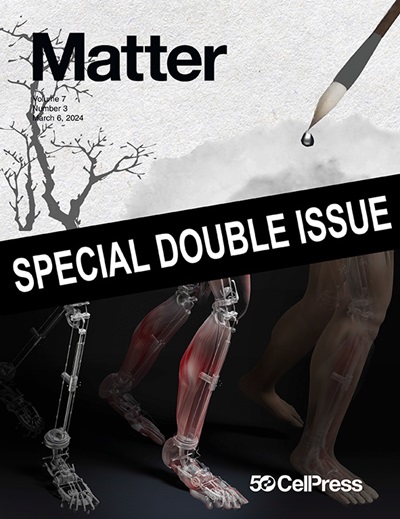Ultra-sensitive and high-resolution flexible thermoelectric sensor enabled by p-n heterojunction array structure
IF 17.3
1区 材料科学
Q1 MATERIALS SCIENCE, MULTIDISCIPLINARY
引用次数: 0
Abstract
Flexible, self-powered thermoelectric temperature sensors with high reliability are increasingly recognized as essential components in tactile perception, wearable technologies, and medical monitoring. To fulfill the performance requirements of these applications—specifically, achieving high Seebeck coefficients and superior resolution—traditional fabrication strategies typically rely on intricate molecular engineering, microscale structural optimization, or macroscale topological design. However, these approaches often involve complex manufacturing processes and elevated production costs, constraining large-scale deployment. Here, we propose a simple multilayer assembly approach that harnesses a self-permeation effect to enable the facile and cost-effective fabrication of flexible thermoelectric sensors with significantly improved sensitivity and resolution. By inducing intensive p-n heterojunctions through self-permeation and leveraging phonon scattering at multilayer-structured interfaces, the obtained sensor exhibits an unprecedented sensitivity of 1,203.6 μV K−1 and an ultimate temperature difference detection capability of 0.001 K, showcasing great potential for applications in three-dimensional environmental monitoring and bionic robotic tactile sensing.

采用p-n异质结阵列结构实现超灵敏高分辨率柔性热电传感器
具有高可靠性的柔性自供电热电温度传感器越来越被认为是触觉感知、可穿戴技术和医疗监测的重要组成部分。为了满足这些应用的性能要求,特别是实现高塞贝克系数和高分辨率,传统的制造策略通常依赖于复杂的分子工程、微尺度结构优化或宏观尺度拓扑设计。然而,这些方法通常涉及复杂的制造过程和较高的生产成本,限制了大规模部署。在这里,我们提出了一种简单的多层组装方法,利用自渗透效应,使柔性热电传感器的制造变得容易和经济高效,并显著提高了灵敏度和分辨率。该传感器通过自渗透诱导强p-n异质结,利用多层结构界面上的声子散射,获得了前所未有的1203.6 μV K−1的灵敏度和0.001 K的最终温差检测能力,在三维环境监测和仿生机器人触觉传感方面具有很大的应用潜力。
本文章由计算机程序翻译,如有差异,请以英文原文为准。
求助全文
约1分钟内获得全文
求助全文
来源期刊

Matter
MATERIALS SCIENCE, MULTIDISCIPLINARY-
CiteScore
26.30
自引率
2.60%
发文量
367
期刊介绍:
Matter, a monthly journal affiliated with Cell, spans the broad field of materials science from nano to macro levels,covering fundamentals to applications. Embracing groundbreaking technologies,it includes full-length research articles,reviews, perspectives,previews, opinions, personnel stories, and general editorial content.
Matter aims to be the primary resource for researchers in academia and industry, inspiring the next generation of materials scientists.
 求助内容:
求助内容: 应助结果提醒方式:
应助结果提醒方式:


